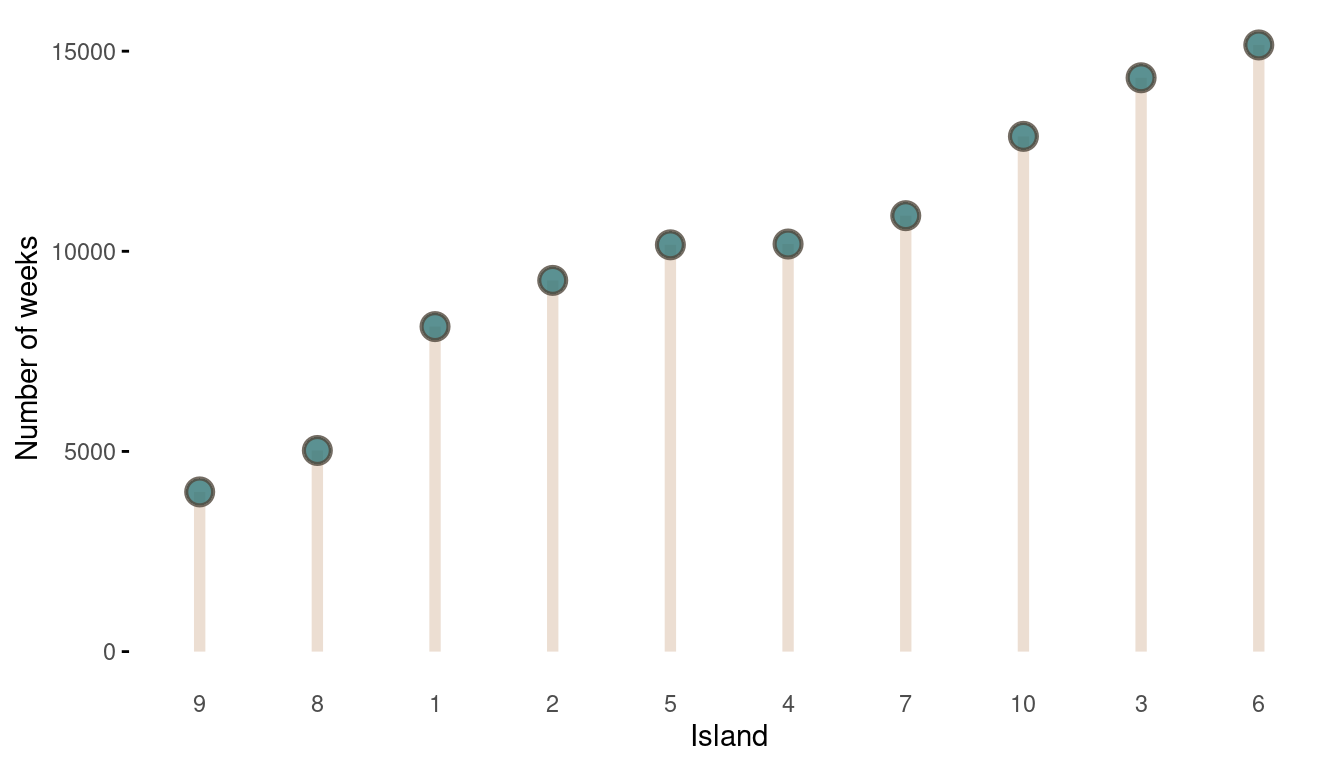

Mapping = aes(x = forcats::fct_infreq(Species), I’m also going to assign this to an object now so I can work on it without having to write the same lines repetitively. Bear in mind that if you have the forcats packaged loaded, you don’t need to specific the package in the function call, which makes it look a little less busy. Note that we also have to add in a label for the x axis otherwise we would get the unsightly forcats::fct_infreq(Species) as the label. The change comes in defining the x argument in aes(). The alternative is to transform your original data so your variable is a factor ordered by count, which is a bit cumbersome if the only reason you are doing it is for one plot. This is a quick and easy way using the forcats package, which doesn’t change your original data. This would be easier to interpret if the species were ordered by count (which would be more true if you had lots of species to compare). Scale_fill_discrete(labels = c("Adult", "Infant")) + Labs(y = "Count", title = "Number of hawks by species") + ggplot(data = hawks, mapping = aes(x = Species, fill = Age)) +

The labels argument changes the labels.įor illustrative purposes, I’ve also used scale_y_continuous to change where the tick marks land (every 150 hawks) and spell out the labels.

So here, we can change the labels on the legend with scale_fill_discrete(), because it relates to the fill aesthetic and it’s a categorical variable.
#GGPLOT RENAME X TICKS MANUAL#
The first part is scale, the second part is the aesthetic you are changing and the third part is whether it is discrete, continuous or manual (i.e. specified by you). There are a group of functions that cover these that all start with scale_*(). These are to do with the legend category labels and the labels on the axes ticks. However, there’s still text on there that we haven’t changed. There are other functions you can use that are more specialist, like xlab() and ylab() for the axes and ggtitle() for the title, but obviously those only cover those specific labels. Subtitle = "Red-tailed hawks were counted most often", Here’s an example with all of those things added. I like to use this function because you can use it to change the title, subtitle, caption or tags as well as the axes labels or other aesthetics. Starting with the labs() function, we can change a lot of the text. ^ 2 ) # Secondary axes work for date and datetime scales too: df <- ame ( dx = seq ( as.POSIXct ( " 12:00:00", tz = "UTC" ), length.out = 10, by = "4 hour" ), price = seq ( 20, 200000, length.out = 10 ) ) # This may useful for labelling different time scales in the same plot ggplot ( df, aes (x = dx, y = price ) ) + geom_line ( ) + scale_x_datetime ( "Date", date_labels = "%b %d", date_breaks = "6 hour", sec.axis = dup_axis ( name = "Time of Day", labels = scales :: time_format ( "%I %p" ) ) ) # or to transform axes for different timezones ggplot ( df, aes (x = dx, y = price ) ) + geom_line ( ) + scale_x_datetime ( " GMT", date_labels = "%b %d %I %p", sec.axis = sec_axis ( ~. + 10, name = derive ( ) ) ) # Duplicate the primary axis p + scale_y_continuous (sec.axis = dup_axis ( ) ) # You can pass in a formula as a shorthand p + scale_y_continuous (sec.axis = ~. + 10 ) ) # Inherit the name from the primary axis p + scale_y_continuous ( "Miles/gallon", sec.axis = sec_axis ( ~. P <- ggplot ( mtcars, aes ( cyl, mpg ) ) + geom_point ( ) # Create a simple secondary axis p + scale_y_continuous (sec.axis = sec_axis ( ~.


 0 kommentar(er)
0 kommentar(er)
